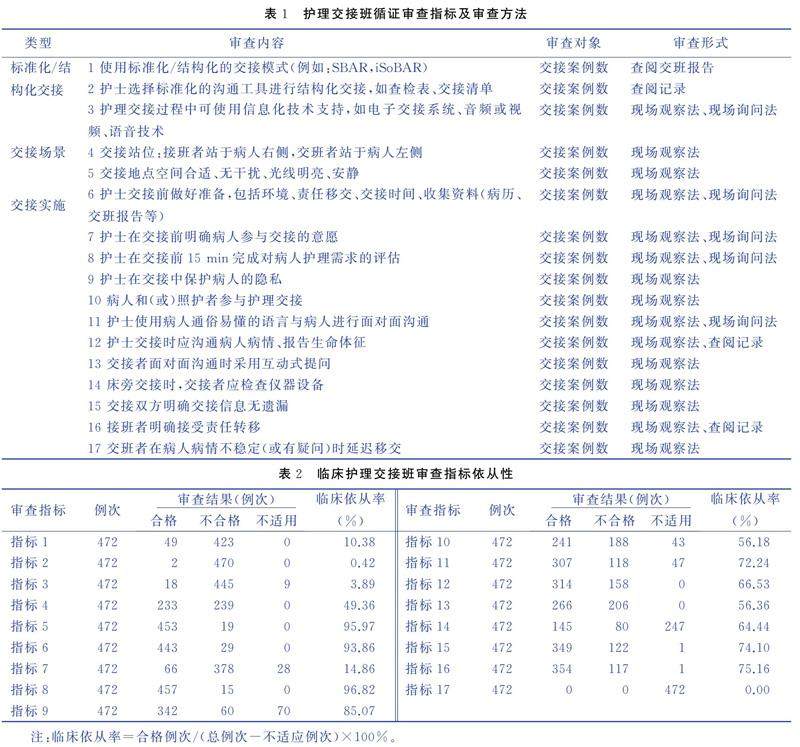基于循证的临床护理交接班审查指标的制订及障碍因素分析


打开文本图片集
Abstract Objective:To comprehensively assess the current status of clinical care handover,develop review indicators based on the best evidence,and analyze the barriers and facilitators.Methods:Using the JBI Evidence-Based Health Care Center′s Clinical Application of Evidence Model as a theoretical guide,we formed an evidence-based team,selected 20 best evidence items,constructed review criteria,determined review indicators and review methods,conducted a clinical review of the evidence,analyzed barriers and facilitators based on the review indicators and review results,and developed action strategies.The review was conducted based on the results of the review.Results:A total of 17 review indicators were developed,of which 9 indicators had an adherence rate greater than 60%,7 indicators had an adherence rate less than 60%,and 1 indicator was not involved.The review indicators with adherence rates <60% were analyzed for barriers,and the barriers were mainly the lack of unified and standardized nursing handover tools and supervision and assessment mechanisms at the system level,and the lack of awareness and relevant knowledge at the practitioner level.Conclusion:This study was based on evidence-based nursing,combined with clinical practice,to comprehensively assess the barrier factors and facilitators in clinical nursing handover,as a basis for formulating action strategies that can facilitate best evidence translation and clinical application.
Keywords nursing handover;evidence-based nursing;review indicators;barrier factors;nursing
摘要 目的:全面评估临床护理交接班现状,根据最佳证据制订审查指标,分析障碍因素和促进因素。(剩余9920字)